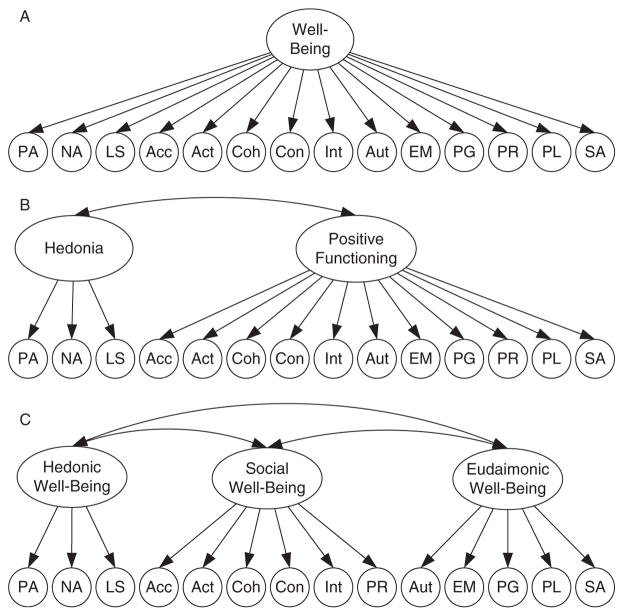Figure 1.
Three competing hierarchical models of well-being. (a) Hierarchical structure of well-being model containing one second-order factor. (b) Hierarchical structure of well-being model containing two second-order factors based upon Keyes’s (2005) model of hedonia and positive functioning. (c) Hierarchical structure of well-being model containing three second-order factors (hedonic well-being, social well-being, eudaimonic well-being). PA =Positive Affect, NA =Negative Affect, LS =Life Satisfaction, Acc =Social Acceptance, Act =Social Actualization, Coh =Social Coherence, Con =Social Contribution, Int =Social Integration, Aut =Autonomy, EM =Environmental Mastery, PG =Personal Growth, PR =Positive Relations with Others, PL =Purpose in Life, SA =Self-Acceptance.

